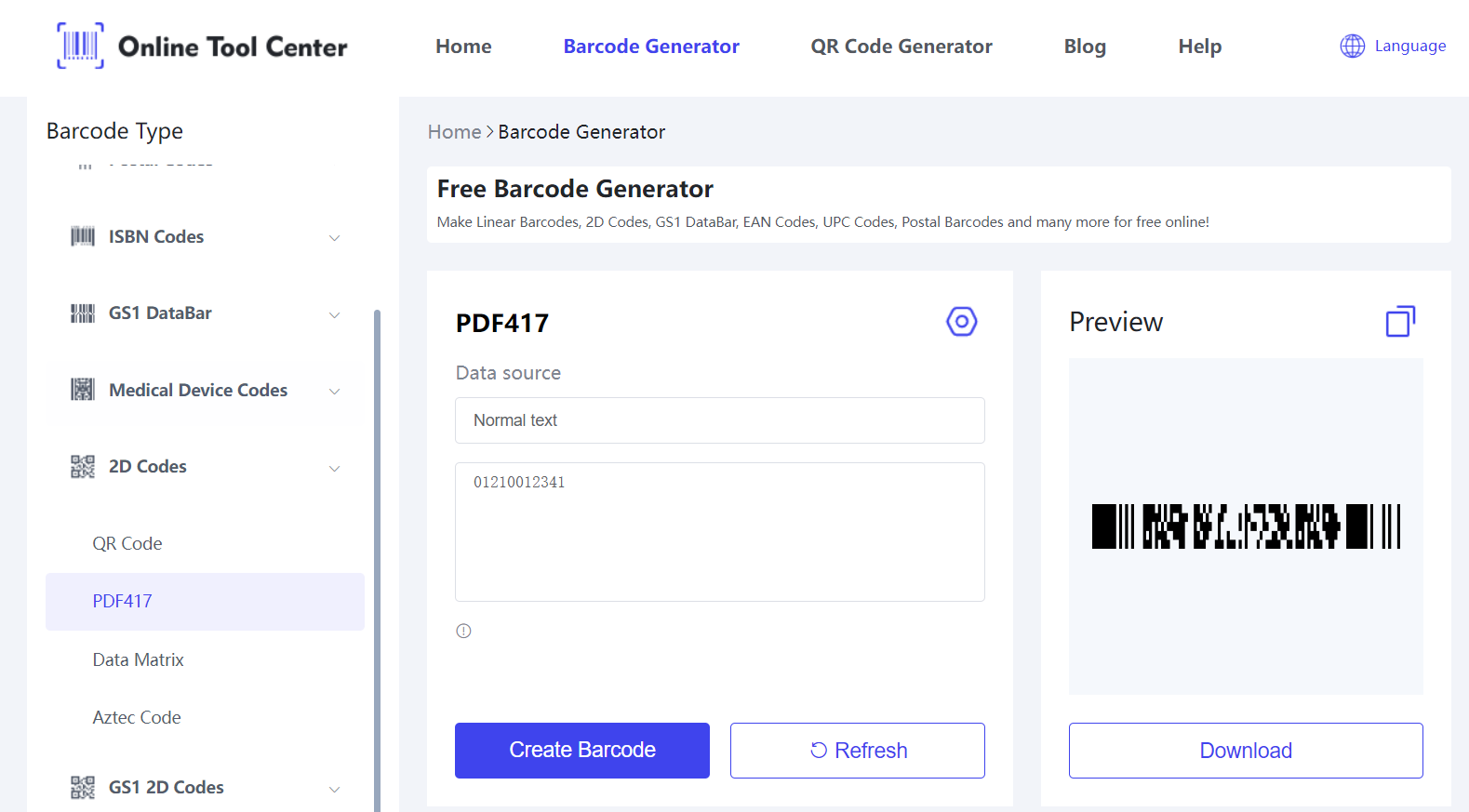What is a 2D Barcode?
A 2D barcode, or two-dimensional barcode, is a graphical image that stores information both horizontally and vertically, enabling it to hold significantly more data than a traditional one-dimensional (1D) barcode.
Unlike 1D barcodes, which only contain data in the form of horizontal lines, 2D barcodes use patterns of squares, dots, and other shapes to encode data. This allows for greater data storage capacity and the inclusion of complex information such as URLs, contact details, and more.
Types of 2D Barcodes
QR Code
QR (Quick Response) codes are versatile and widely recognized, used for everything from directing consumers to websites to making payments.
Data Matrix
Data Matrix codes are compact and highly durable, making them ideal for industrial applications where space is limited, and conditions may be harsh.
PDF417
PDF417 codes can encode large amounts of data, including text, numbers, and images, and are commonly used in transport, logistics, and identification documents.
Aztec Code
Aztec codes are efficient in terms of space utilization and are used in applications such as ticketing and transportation, where high readability is essential.
Differences Between 1D and 2D Barcodes
When comparing 1D vs 2D barcodes, the most apparent difference lies in their structure. 1D barcodes consist of a series of parallel lines of varying widths and spaces, representing data in a linear form.
In contrast, 2D barcodes utilize a grid of pixels, enabling them to store more information in a smaller space.
Importance and Benefits of Using 2D Barcodes
2D barcodes offer numerous advantages over traditional 1D barcodes:
● Higher Data Capacity: They can store more information in a smaller area.
● Improved Error Correction: Built-in error correction capabilities ensure data integrity, even if the barcode is partially damaged.
● Versatility: Suitable for a wide range of applications, from product tracking to digital payments.
● Security: Enhanced security features make it harder to counterfeit or tamper with the information.
How Do 2D Barcodes Work?
● Structure and Encoding Information
2D barcodes encode data using a combination of black and white squares, dots, or other geometric shapes.
These patterns are arranged in a matrix and can represent various types of data, including numeric, alphanumeric, byte/binary, and even Kanji characters.
● Data Capacity and Types of Data Stored
The data capacity of 2D barcodes is significantly higher than that of 1D barcodes. For instance, a QR code can store up to 4,296 alphanumeric characters or 7,089 numeric characters.
This capability allows 2D barcodes to encode extensive information, such as detailed product descriptions, URLs, and even multimedia content.
● Comparison with 1D Barcodes in Terms of Data Storage and Error Correction
2D barcodes surpass 1D barcodes not only in data capacity but also in error correction.
While 1D barcodes can become unreadable if damaged, 2D barcodes employ error correction algorithms (e.g., Reed-Solomon) that allow the barcode to be scanned accurately even if a portion is obscured or damaged.
Applications of 2D Barcodes
● Retail and Inventory Management
2D barcodes streamline inventory management, track products, and enhance the shopping experience with quick price checks and payment options.
● Healthcare and Pharmaceuticals
In healthcare, 2D barcodes ensure accurate patient identification, track medication, and reduce errors in medication administration.
● Transportation and Logistics
2D barcodes improve efficiency in tracking shipments, boarding processes, and verifying passenger information.
● Manufacturing and Production
In manufacturing, 2D barcodes track parts and products through production lines, ensuring quality control and traceability.
How to Generator a 2D Barcode?
Here's a step-by-step guide to using a 2D barcode generator:
1. Go to the 2D barcode generator section.

2. Select Barcode Type: Choose the type of 2D barcode (e.g., QR code, Data Matrix).
3. Input Data: Enter the information you want to encode in the barcode, such as a URL or text.
4. Generate Barcode: Click the 'Create Barcode' button to create the barcode.
5. Download and Use: Download the barcode image for use in your applications.
6. Test: Use a 2D barcode scanner to read and decode, converting the encoded data into a readable format.
In summary, for businesses looking to implement 2D barcode technology, a free online barcode generator can offer an accessible and efficient way to generate these barcodes, enhancing operational efficiency and data accuracy.
FAQs About 2D Barcodes
1. What is a 2D Barcode?
A 2D barcode is a graphical image storing information horizontally and vertically, enabling higher data capacity.
2. Is a 2D Code Same as a QR Code?
No, a QR code is a type of 2D barcode, but there are other types like Data Matrix and PDF417.
3. What is the Difference Between 1D and 2D Barcode Reader?
1D barcode readers scan linear barcodes, while 2D barcode readers use imaging technology to read matrix patterns in 2D barcodes.




